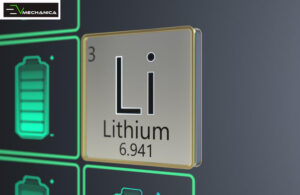 Discovery of large reserves of Lithium ion in India has become a turning point in the history of the electric vehicle ecosystem.
Discovery of large reserves of Lithium ion in India has become a turning point in the history of the electric vehicle ecosystem.
Known as one of the lightest metals in the periodic table, Lithium ion in India is garnering a great deal of attention due to its rare occurrence and its huge role in the production of EV batteries and consumer based electronics.
Found by the Geological Survey of India team in Jammu and Kashmir’s Reasi District, 5.9 million tonnes of lithium reserve discovery was announced by the Ministry of Mines on February 9, 2023.
Lithium ion in India is a major step that will help in reducing India’s dependence on the import of EV batteries, mobile phones, laptops, etc.
With the electric mobility ecosystem gaining a high rate of investments nationally as well as globally, India is set to achieve its self-proclaimed goal of gaining net carbon neutrality by 2030 with the transition of the majority of vehicle fleet with its electrified version.
Determined to reach the goal within the set time limit, the Indian government has been actively initiating a variety of subsidy programs as well as incentive-based schemes to promote the adoption of EVs on a mass scale. Production and manufacturing of EV-based lithium-ion batteries are the first steps.
Sensing the impending growth of the electric mobility sector, various automotive suppliers, OEMs as well as big-tech companies have started showing their interest in making their debut in the nascent field of EVs.
This is why the sudden discovery of Lithium ion in India has made such a big stir in the high-class strata of business enterprises leading the country’s automotive sector.
Nonetheless, before discussing the aftereffects of the sudden announcement of How is Lithium Found in India, one must understand the general applications and properties of Lithium in more detail.
Lithium Reserves- What & Why Is It Significant?
 Described as one of the lightest light metals present in the periodic table, Lithium is a highly reactive and alkaline metal.
Described as one of the lightest light metals present in the periodic table, Lithium is a highly reactive and alkaline metal.
Majorly used in ceramics and glasses, greases, pharmaceutical compounds, air conditioners as well as in aluminum production, it is a major component of the electric vehicle battery.
Sought out due to its highest energy storage capacity per kilogram, Lithium has a high energy storage capacity that can be combined with its extremely lightweight which makes it a perfect choice for electric car manufacturing.
Lithium-based cells are generally used for electronics, power tools, electric vehicles, and electrical energy storage systems.
Lithium Reserves Scenario in India So Far
 According to certain market reports, the global Lithium-ion battery market is forecasted to grow at a CAGR of 16.2% while reaching $129.3 billion by 2028.
According to certain market reports, the global Lithium-ion battery market is forecasted to grow at a CAGR of 16.2% while reaching $129.3 billion by 2028.
Keeping these statistics in mind, the discovery of Lithium ion in India is possibly not the element’s first discovery in the nation, however, the amount of the reserve is still the largest up to date.
Around two years back, this light reactive metal was also found in Karnataka wherein around 1,600 tonnes of lithium reserves were discovered in Mandya, Karnataka. However, due to some mining issues, the site couldn’t be utilized commercially till now.
However, the government didn’t lose hope and has been running a Lithium exploration program in several other states including Arunachal Pradesh, Andhra Pradesh, Chhattisgarh, Jharkhand, Jammu & Kashmir and Rajasthan.
According to a report, around seven Lithium explorations were being carried out till 2021 as the project is carried out by the Atomic Minerals Directorate for Exploration and Research (AMDER) under the Department of Atomic Energy (DAE) in Karnataka and Rajasthan.
India’s Lithium Reserve Vs. Lithium Found Abroad
Even if the Lithium Found in India from the recent Jammu and Kashmir’s reserve is included, the present lithium reserves in India are still insufficient to match with the world’s top reserves.
Standing at the apex, Bolivia has claimed to own 21 million tonnes of Lithium, Argentina owns 17 million tonnes of lithium, and Australia has 6.3 million tonnes of Lithium.
Bolivia, Chile and Argentina are therefore, together called the ‘Lithium Triangle’ as South America contains a highly rich source of lithium.
However, the largest supplier of Lithium Reserves is none other than China which holds 4.5 million tonnes of light metal.
How is this possible?
Despite holding only a total of 7.9% of the world’s total lithium reserves, China comes up as the top supplier due to its highly sensitive and industry-ready mining facilities and machines, which allows maximum extraction a possibility.
Spending a fortune of $16 billion on mining operations abroad to explore lithium, has made China the world’s leader in the manufacture of electric vehicles.
Impact of Lithium Found in India
 One of the key impacts of Lithium ion in India is the reduction in the cost of producing EV batteries locally.
One of the key impacts of Lithium ion in India is the reduction in the cost of producing EV batteries locally.
With the discovery of Lithium Found in India, it is expected that domestic production of Li-ion batteries which were originally imported from abroad at higher prices.
This, in turn, will enable the manufacturing of electric vehicles more cost-efficient as with locally produced batteries, the cost of overall EV production will also come down and the high import rates will be avoided.
Another vital impact of Lithium ion in India is the surge of manufacturing practices of electric vehicles to achieve the net-zero carbon goal set by Prime Minister Narendra Modi.

